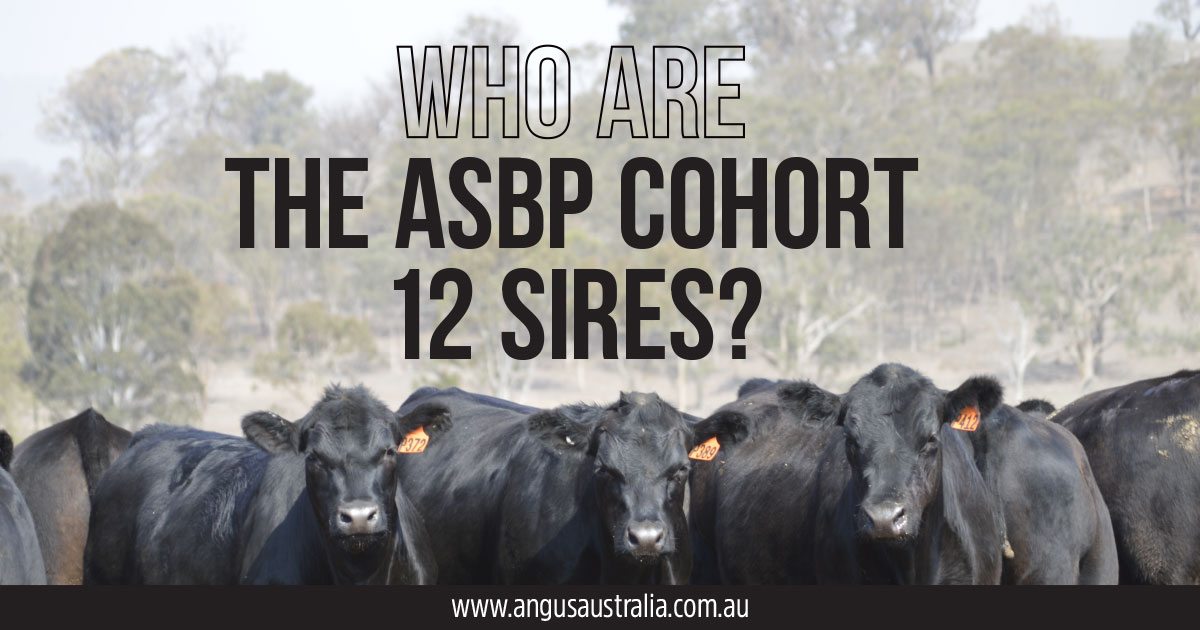Which Bulls Entered ASBP Cohort 12?


The Angus Sire Benchmarking Program (ASBP) has seen the entry of 24 new bulls, selected from over 59 nominations from Angus Australia member, to produce the Cohort 12 calves.
The Cohort 12 sire list, and previous cohorts sire lists, are available from Sire Benchmarking catalogue listing on angus.tech. CLICK HERE
Further, the Cohort 12 sires are described in the following groups:
The 24 bulls continue the high-performance nature of ASBP sires with the group averaging in the top 5% for the $A and $A-L selection indexes. This is also coupled with genetic diversity and representative of the modern Australian Angus population which is important for an effective reference population.
Across the 12 Cohorts of the ASBP, there has now been 410 modern Angus bulls enter this industry leading research and development program.
Additionally, the 2021 AI program to produce the Cohort 12 calves has been completed with 1,666 Angus females joined across 5 co-operator herds. New sires where joined to 70 Angus females on average with the aim to produce ~35 calves for each sire. This is from a fixed time AI program with one round of insemination, utilising Vetoquinol advice and products such as Cue-Mate devices.
The Angus Sire Benchmarking Program (ASBP) is a major R&D initiative of Angus Australia with support from Meat & Livestock Australia (MLA) and industry partners such as Vetoquinol, Rangers Valley, Stockyard, John Dee Abattoir, Neogen and Zoetis.
The objective of the ASBP is to “Grow the comprehensive phenotype and genotype reference population on contemporary Australian Angus animals, particularly for hard‐to‐measure traits, for enhanced genetic evaluation, collaborative research and innovative development.”